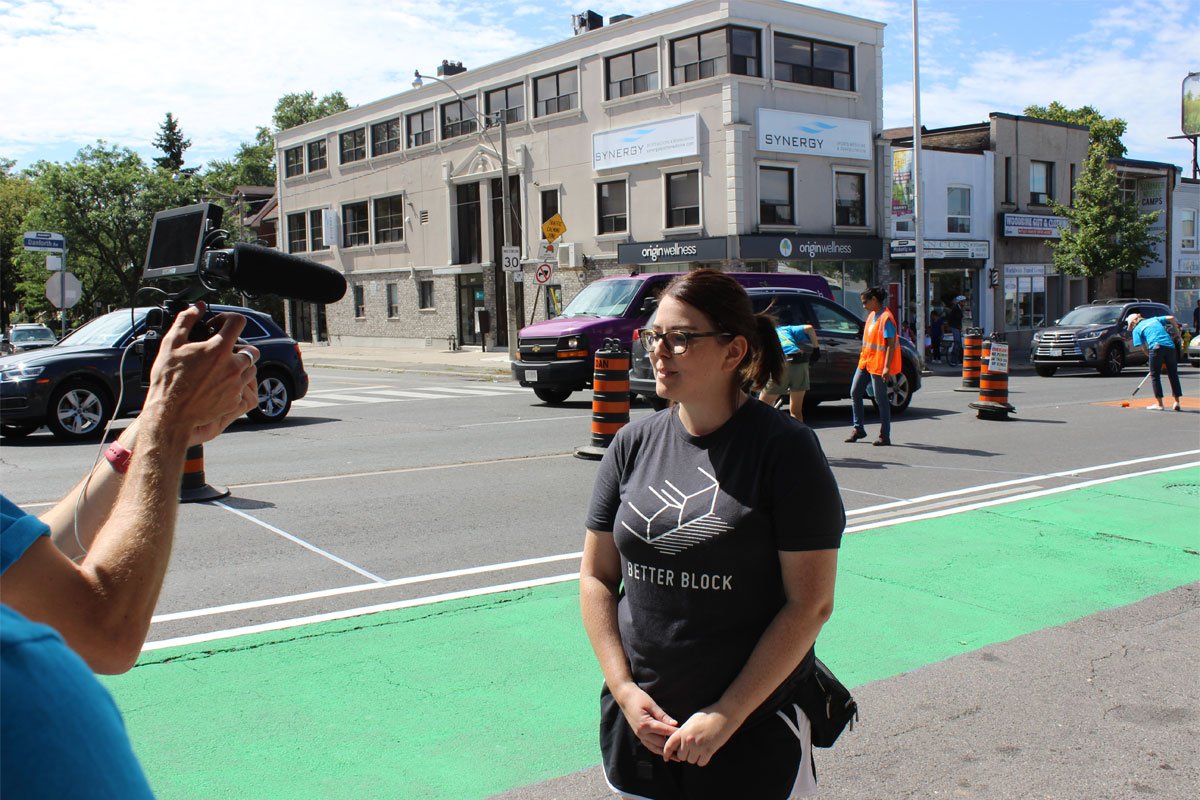
12 Sep An Interview with Krista Nightengale, Managing Director of The Better Block Foundation
In 8 Questions, 8 80 Cities asks amazing partners we’ve worked with, or amazing people doing amazing work 8 questions about their passions, their history and their amazing-ness. And then we ask them to suggest a question for our next interviewee.
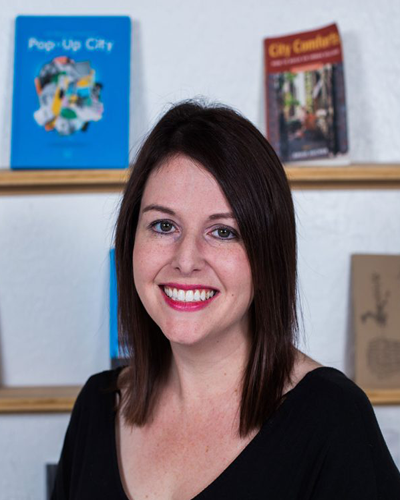 During 8 80 Streets Danforth, 8 80 Cities Administrative & Communications Manager Camila Uriona spoke to Krista Nightengale, Managing Director of The Better Block. Krista joined the Better Block Foundation to help with its growth, spread its story, and make the world a little better by showing communities how wonderful walkable/bikeable districts are.
During 8 80 Streets Danforth, 8 80 Cities Administrative & Communications Manager Camila Uriona spoke to Krista Nightengale, Managing Director of The Better Block. Krista joined the Better Block Foundation to help with its growth, spread its story, and make the world a little better by showing communities how wonderful walkable/bikeable districts are.
8 80 Cities: Tell us about Better Block and the work you do.
Krista: I’m the Managing Director of The Better Block, which is an urban design non-profit, where our goal is to work with communities and give them the tools and resources they need to make the changes they want to see in their neighbourhood. We work to create beautiful places that activate spaces to bring people together.
We have a lot of different things that we do, but at the core are our Better Blocks, which are a 90- to 120-day process, where we work with the community to identify what works and what doesn’t work. We put together a plan for one block in their neighbourhood, and then we work to bring that plan to life for a two-day demonstration. During the demonstration, the community comes out, they bring it to life, they get to live in it, they get to feel it, and they get to see how it would work or didn’t work. Frequently, these two-day demonstrations are quick, but they get the community organized giving them a plan and set them up for the next step on how to turn some of the elements into something more permanent.
We have recently gone into the world of digital fabrication, using 3-D printers, CNC routers, and laser cutters to create street furniture for and with communities. We have something called Wikiblock, which is an online library of street furniture designs that anyone anywhere can download for free, they can cut them out using a CNC router, which is a giant printer for wood; they can put them together without any glue, screws, or nails, and they can use them to activate their streets. So that started us in this world. We went from pallet furniture that was super temporary and needed a lot of skills to make it look beautiful to more permanent, elevated designs.
We also do a few study tours; and we do something called Better Block in a Box, which is a shipping container that has all the elements you need for a placemaking event. You can rent the Better Block in a Box, pull out all the furniture and assemble with instructions for how to put them together, and then use the empty container as a bar, kiosk, or whatever you want it to be. Then, you have your event, you put everything back in the container, and you ship it off.
How’s that going?
We launched it a few weeks ago, we’ve used it three times, and it’s booked a few more. We thought we were going to rent these out, but we have an organization that wants to buy their own. So, we are purchasing a shipping container for them, customizing it to their specific needs, and then they can use it whenever they need it.
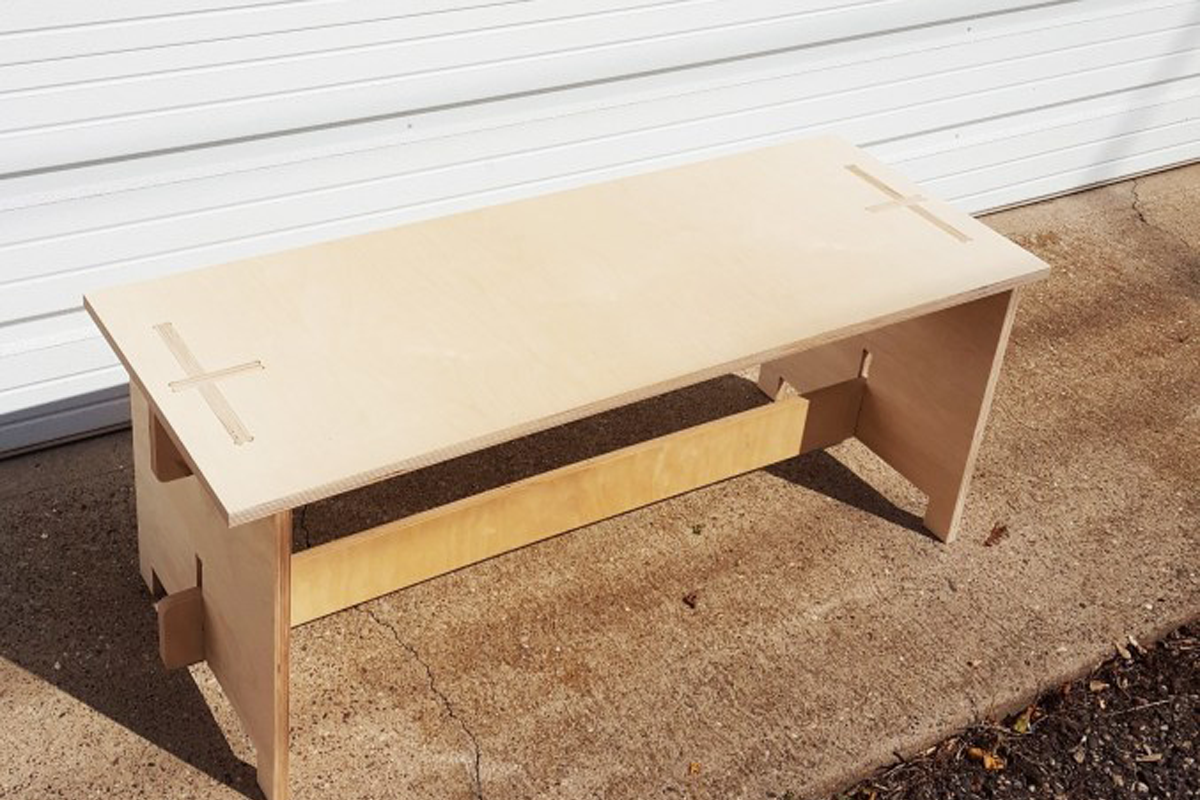
Wikiblock greenline bench
8 80 Cities: Let’s talk about pop-ups and the power of this kind of interventions. I’ve always been fascinated about how you can transform a street so quickly and turn it into a beautiful space. Tell us about how you experience that power when you are in action.
Krista: I’m fascinated by them as well because I think a lot of times, we think that we don’t have the right to be on the street and that we don’t have a right to transform spaces. Street transformations must go through all these processes and requirements, but what is incredible about what we get to do is that we can work in the back end on that kind of stuff and allow the community to feel what that transformation feels like. The magic is in that moment when everything is finally in place, and everyone is standing there, and the music starts up, and that’s it, that’s the space you wanted to create, there is a lot of magic at that moment. I remember one of the first times I did this, having that overwhelming feeling, and looking around at my neighbours and realizing that we had done that together. I think that is a beautiful moment. It’s a special moment for communities to feel that together, and to realize they were the ones to make that happen. Because, again, a lot of times we are told we can’t be on the streets, and that we can’t do this or can’t do that, and pop-ups are a way in which we can do these things.
They’re also important because change is scary, and pop-ups erase the fear of permanency by doing demonstrations and allowing people to feel it and be in it. Our projects are never 100-percent perfect; there are always things that can be made better, but with demonstrations, you get to see that, test it, and tweak.
8 80 Cities: What are the challenges? I’m sure there are a few. I mean, I’m seeing that right now as this is my first time experiencing a demonstration with Better Block.
Krista: In general, each project is different; each city is different; thus the challenges are different. However, there are a few themes we see emerge because we built so many of our communities around the car. In general, we find that traffic engineers are a bit wary of us. We often work closely with fire departments to ensure the trucks can fit on any redesigned street. In pretty much every neighbourhood, we are asked about parking. We often say that it’s hard to find parking in great places, meaning that the places we love are the ones that are built for people versus the vehicle. When we start to add in more and more parking, space is less human-centred. While there are challenges, there are examples of ways in which these interventions have worked. We work closely with the various partners to address their concerns and showcase the potential.
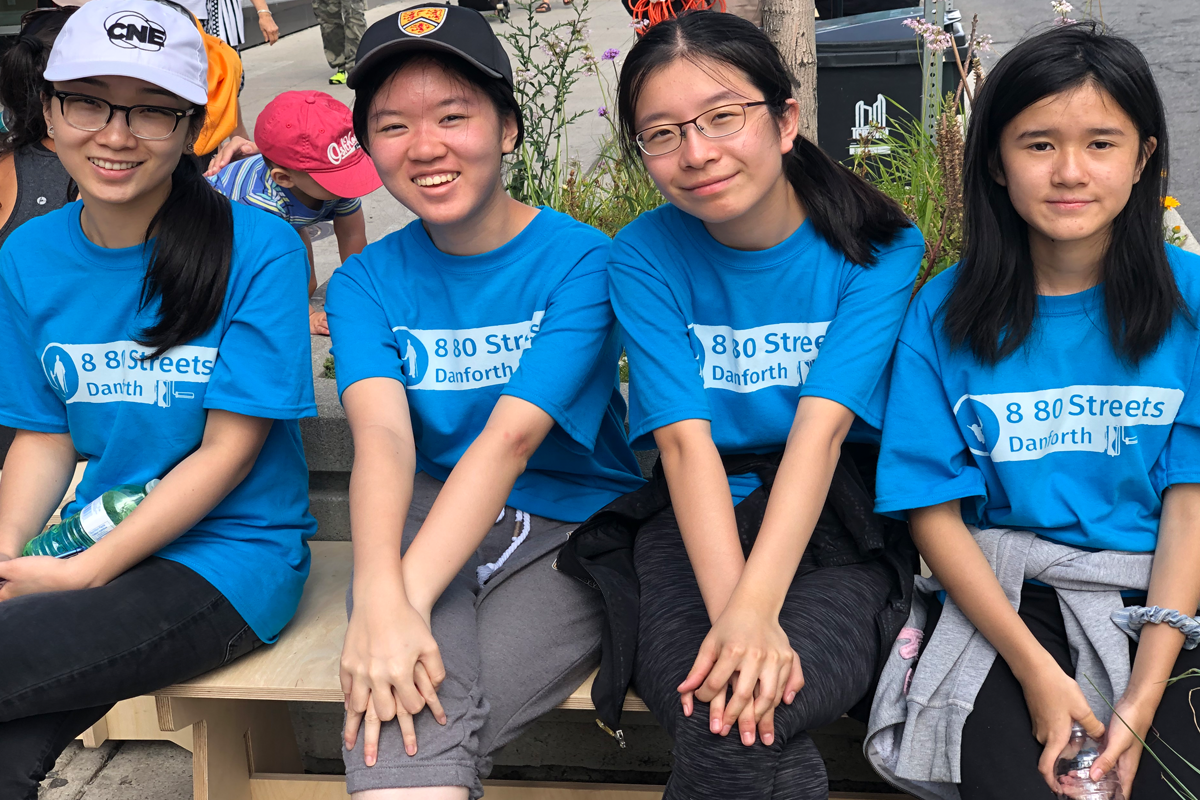
Some of the amazing volunteers who took part of 8 80 Streets Danforth
8 80 Cities: How does the engagement process work for you? Do you have local partners? How do you engage the community?
Krista: We find block captains who are locals to the community and are often the super volunteers. The block captains are the ones who keep us updated about how things are moving along. Underneath the block captains, we have all the committees for each project, like marketing, materials, coordinating volunteers, programming, whatever committees we create for this specific project. Sometimes things get all organized, sometimes not, but the block captains are important.
8 80 Cities: You are here in Toronto today because 8 80 Streets Danforth finally happened, and it was a great experience to work with you on this and seeing you guys in action and putting this together. And it’s the first-ever pop-up intervention in Canada. Tell us about your experience creating a tactical urbanism intervention in Toronto. What worked? What didn’t? What were the challenges?
Krista: When we started working on this project last year, things were going to happen fast. It was going to happen within 30 days of designing the project, and that would have been quick for any city. But we thought perhaps we could all make it happen in Toronto. Unfortunately, it didn’t (with the issue of the 54 councillors downed to 25). But that wasn’t terribly surprising.
The process since then required a lot of detail, from the overall design down to where every piece of furniture would go. Being on the ground, I have to say that the volunteers have been amazing for this project. I have been a little surprised by the feedback. As expected, there has been a lot of positive, which is great to hear. However, what we didn’t expect is that there has been more negative than I anticipated. As an outsider, I assumed Toronto to be a very bicycle-friendly and pedestrian-friendly city. It has many great streets and wonderful businesses. I didn’t expect to have such ferocity in some of the comments. It has been interesting to see us (motorists) versus them (bicyclists) mentality, and how much divide there is. It appears there is not any middle ground, and it’s very pronounced. There are a few design tweaks that can be made that I think would appease most folks. That is what the demonstration is for: to put the design out there, get the feedback, see what people think and make tweaks, and then have a more informed long-term plan moving forward.
What was the biggest obstacle into all this?
You all worked so hard. Probably the negotiations with the city, and not having a permit in place for something like this was probably the biggest obstacle, and obviously you all took that on, and continued to push. And this project wouldn’t have been possible without your persistence, and your work through the obstacles. We didn’t have to see much of that. I know that took a big chunk of the deal, I would say we came after all that to enjoy and have fun, but without you, this wouldn’t have been possible.

Krista Nightengale and Ryan O’Connor from 8 80 Cities discussing the concept plan on site
8 80 Cities: Speaking of all the challenges, the positives and negatives, is there a recipe for success in this kind of interventions in a city like Toronto?
Krista: What you’ve done, and what we’ve done. You introduced a new idea to the city, and now there is a process in place. It is cost-prohibitive, but I think that it can be fixed, and if there is something that people want to see more of, or want to do more of, I think you’ve laid the groundwork for the next organization. It’s all about community engagement and getting feedback, and I think that for people to fully understand a plan, they have to live in it. I think the recipe of success is to keep testing and tweaking and allowing people the opportunity to have their voices heard.
8 80 Cities: Tell us about your favourite pop-up.
Krista: Every project is special. But my favourite is probably the first time I got to experience a Better Block as a community member. Jason (our founding director) was doing a 72-hour challenge on the street that my office at the time was on, and I got a group of friends and volunteers, and we participated in that one. I quite enjoyed the experience and getting to do it. In this one, I was the community member, and it was fun to see the changes that you can make in a very short amount of time and to have the audacity to go and make those changes. I think that was the first time when I experienced that we could do this sort of things.
After that, an urban planner started talking about the idea of tearing down a portion of the highway that separates a couple of our neighbourhoods in Dallas. That’s when I realized how these elevated highways separated our cities. I began to wonder what could be done to fix this. I realized that through a grass-roots approach, such as the Better Block, the fixes could be made by the communities. That’s when I realized I wanted to do this as a career.
8 80 Cities: From our last interviewees from the Miami based Urban Health Solutions, a consulting firm dedicated to helping communities, institutions, and businesses reach their desired goals through analytical, systemic, and coordinated services and innovations, Anamarie Melo and Isabel Kilzi Rovira: How much of the success of your organization can you attribute to your hard work or talent, and how much to the fact that you are in the right place at the right time.
Krista: I cannot attribute anything to my hard work or talent because we literally can’t do any of this alone. It’s our teams, and volunteers, partners and communities that make this happen. For the projects, there is no right place or right time; it is all the work of partners, teams and volunteers. They are the ones making things happen that couldn’t happen; otherwise, they are pushing to make the changes, they are putting the things on the ground, they are soliciting the feedback, and they are the reason that these things are happening. It is all based on people’s desire to see change and to want to be the ones to make that change.
8 80 Cities: What would be your question for our next interviewee?
What was the defining moment that led you to your career or this position that you are in?

Krista taking a break from painting the street mural. Danforth Ave.
As I’ve been following your work closely, and I admire you as a professional and as a woman, I have two more questions to Krista, the woman, and Krista, the professional. Who do you admire from the female world? Who is your inspiration?
I’ll give you two answers. The first one is Christine Allison, who is the president of D Magazine. She is someone who looks at no, laughs, and changes it to a yes. She helped me navigate my first real-job and taught me to look at the world through a variety of lenses. She is someone I greatly admire.
Carol Coletta is another one I admire. She is someone that whenever she speaks, I want to write everything down; whatever she does is just brilliant. She has an amazing talent for recognizing talent, and for uplifting people and getting them to the next stage. The Better Block Foundation wouldn’t exist without her, and I think a lot of people can say that. She has helped so many of us make these strange jobs our careers.
What is your secret to keeping the Zen while we are doing all this crazy thing we do, moving things, going here and there, driving things around, talking to people, and you look so calm, relaxed, so composed despite all the challenges and obstacles? How do you do that?
Thank you for saying that. I think I don’t do that well, so I appreciate that. Perhaps part of why it looks like I’m not worried is that I trust in the process and trust the people. We are going to make these things happen, and we are working toward the same goal. Everybody is out there because of the love of the community, and that drives everything. I think it’s easy to do when you all work toward the same goal.

